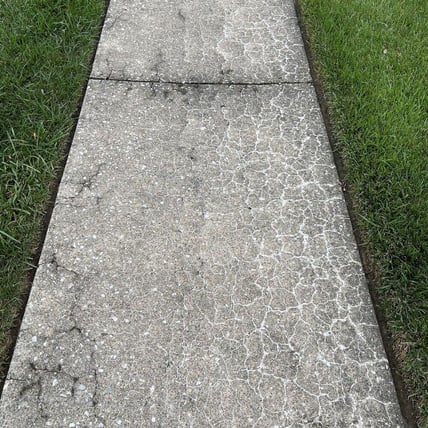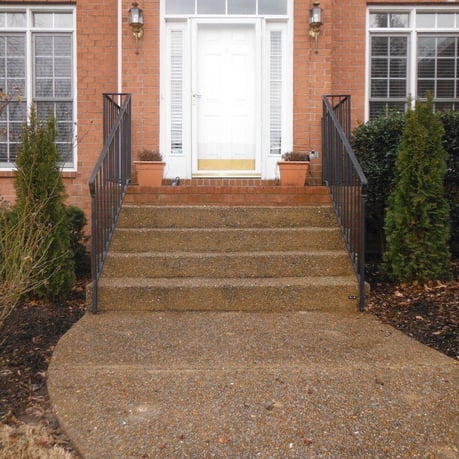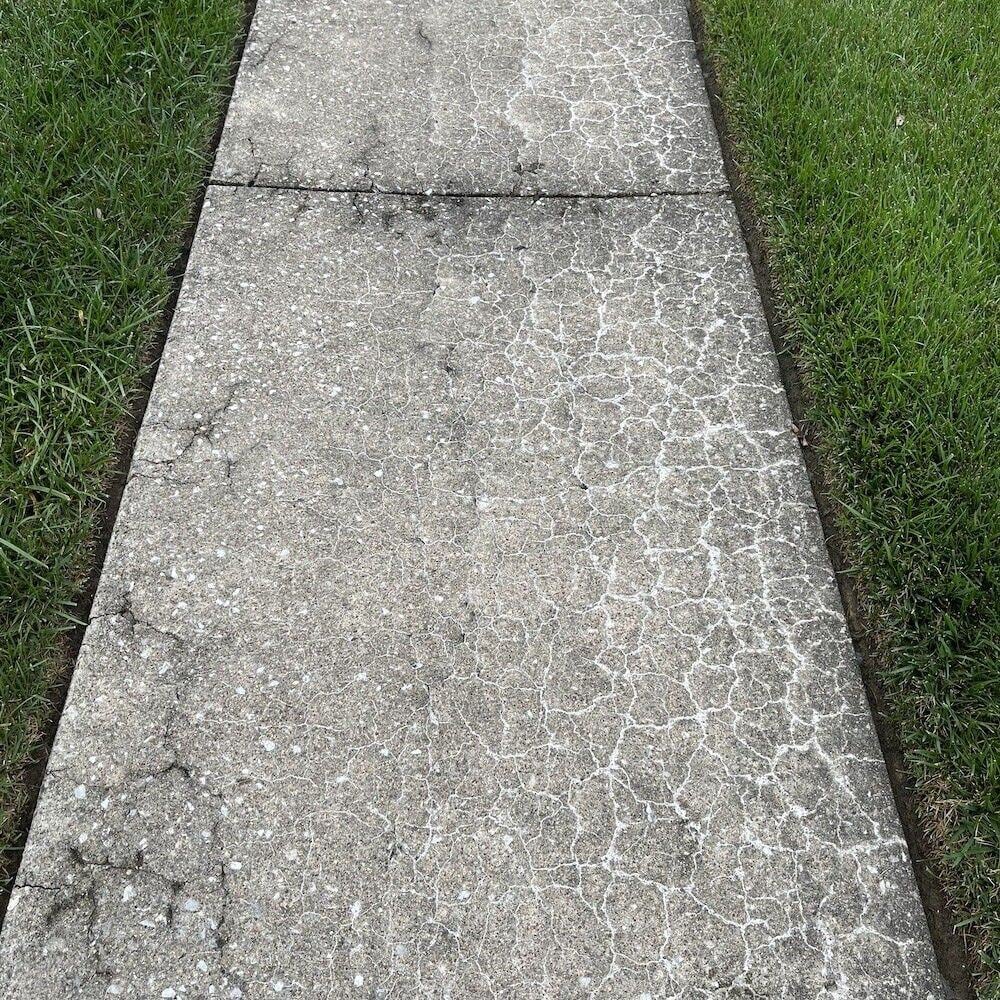
Is your settled concrete cracked or crumbling? Find out if it's past the point of saving with concrete leveling.
Concrete leveling can be a quick, convenient, and cost-effective solution to sunken concrete – but it’s not the best option out there for every situation.
Sometimes concrete is too badly damaged to be lifted up, or the goals of the repair don’t align with what concrete leveling is capable of.
In this article, we’re using our 30+ years of experience lifting concrete to shed some light on when to avoid concrete leveling, for these reasons and more!
Reason #1: Your Concrete Is Crumbling
To lift concrete, holes are drilled in the sunken slab and a leveling compound is pumped underneath the concrete.
As the leveling compound spreads out and fills the voids under the slab, pressure builds up and the slab begins to lift.
However, if the concrete is crumbling or breaking apart, pressure won’t build up and there will be nothing for the concrete leveling compound to lift.
Instead, if pumped below a crumbling concrete slab, the compound will likely ooze out and make a big mess. In the case of crumbling concrete, it’s better to go with total replacement.
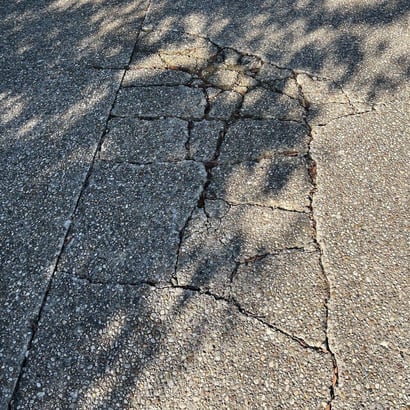
Reason #2: Your Concrete Slabs Have Multiple Small Breaks Throughout
If your concrete slab is broken up into multiple smaller pieces (less than around one square foot each), you should avoid concrete leveling and consider replacement instead.
Leveling concrete with more than just two or three small breaks is like putting together a puzzle with lots of different pieces.
Because each piece is separate, they each would have to be lifted individually, making it difficult to build up proper pressure under the slab and get an even grade across each piece.
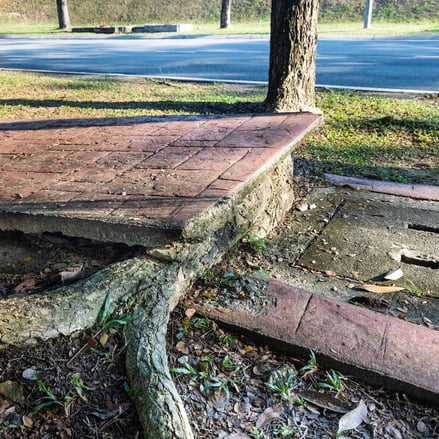
Reason #3: Tree Roots Are Lifting Your Concrete Too Far Out of Place
Because tree roots raise concrete up instead of making it sink, during a concrete leveling repair for tree root damage, the adjoining concrete slabs are lifted to create an even grade with the slab pushed out of place by the tree roots.
When tree roots have grown under the slab and pushed it too far out of place, however, it’s impossible to create an even grade or slope over the tree roots.
In cases of uneven concrete due to extreme tree root growth, you’ll need to remove the tree roots causing the concrete to lift, then level the concrete.
Pro Tip: If you are interested in concrete leveling but not sure if tree root damage is too extreme, send in photos of the problem area when you request an estimate and we will let you know.
Reason #4: You Want To Change the Concrete’s Function or Design
If you want to dramatically change the way your concrete looks or how it functions, it’s better to redesign and replace or resurface the concrete completely.
For example, if you currently have concrete stairs and prefer a ramp, or your concrete is exposed aggregate and you want it to be broom-finished, concrete leveling can’t help.
This is because concrete leveling preserves the concrete you already have – there is no changing to the actual slabs themselves other than lifting them up to the proper position.
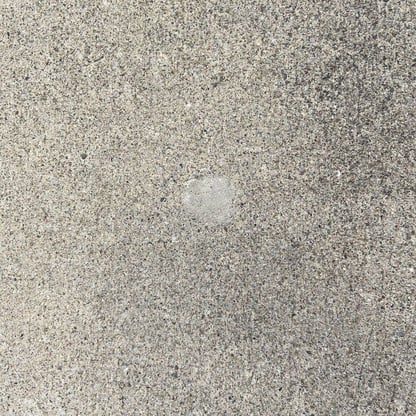
Reason #5: You Want To Change The Concrete’s Surface or Texture
Unlike self-leveling concrete that goes on top of uneven concrete surfaces to smooth them out, professional concrete leveling lifts sunken concrete slabs from the bottom up.
The concrete leveling process does not affect the surface texture or appearance at all, other than the patched drill holes that are used during the process to pump the concrete leveling material under the slab.
So if you’re only looking for a smooth, even surface texture rather than lifted concrete, it’s better to go with professional resurfacing or replace it entirely as concrete leveling itself will not improve the surface of the slab.
Is Concrete Leveling Right for You?
Now that you know when to avoid concrete leveling, you can take a look at your own concrete and decide whether or not leveling may be a good solution for you.
Concrete leveling repairs come in all shapes and sizes, and a qualified concrete leveling professional will be able to assess your situation and determine if the concrete is too far gone for concrete leveling, or if your overall goals fit within what this repair method is capable of.
Interested in concrete leveling but still not sure if your concrete is a good fit? Find your nearest location to request an estimate, but be sure to submit photos of your problem when you fill out the form. An A-1 Concrete Leveling team member will let you know if your concrete can be lifted and whether a cost estimate is the right next step for you!
Sarah Etler joined A-1 Concrete Leveling after receiving her Bachelor of Arts degree in English from Northern Kentucky University. As A-1's Content Marketing Manager, she works closely with industry experts to produce content that will best answer questions related to concrete repair and maintenance practices. Sarah loves living a life full of discovery and is excited every day to see what new things she can learn and share with those around her.
Topics:
